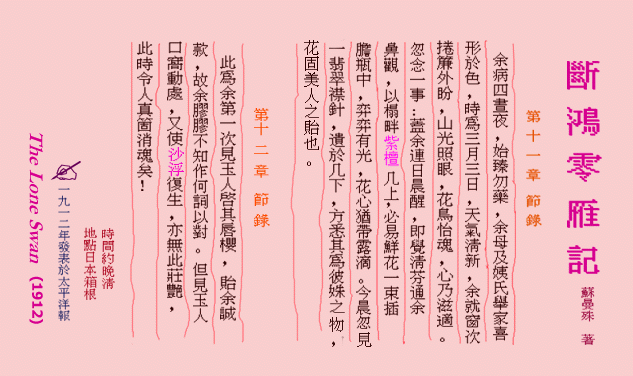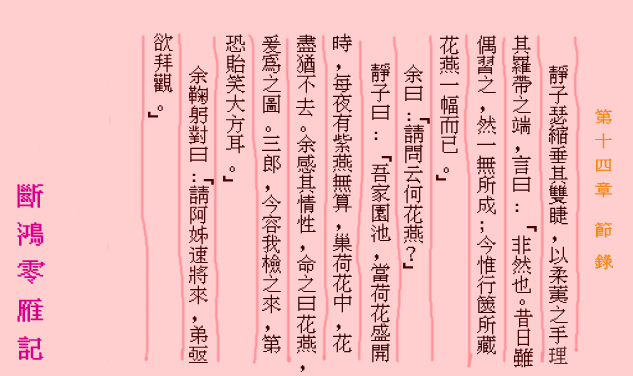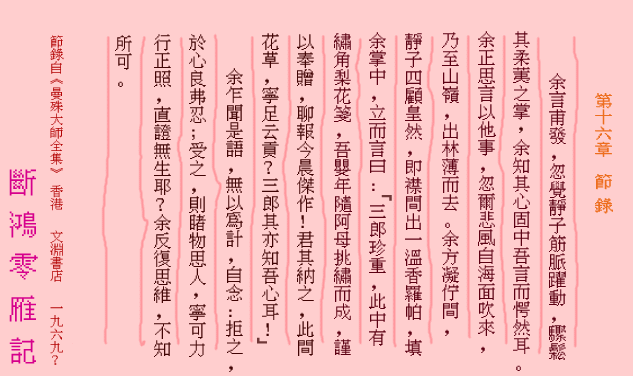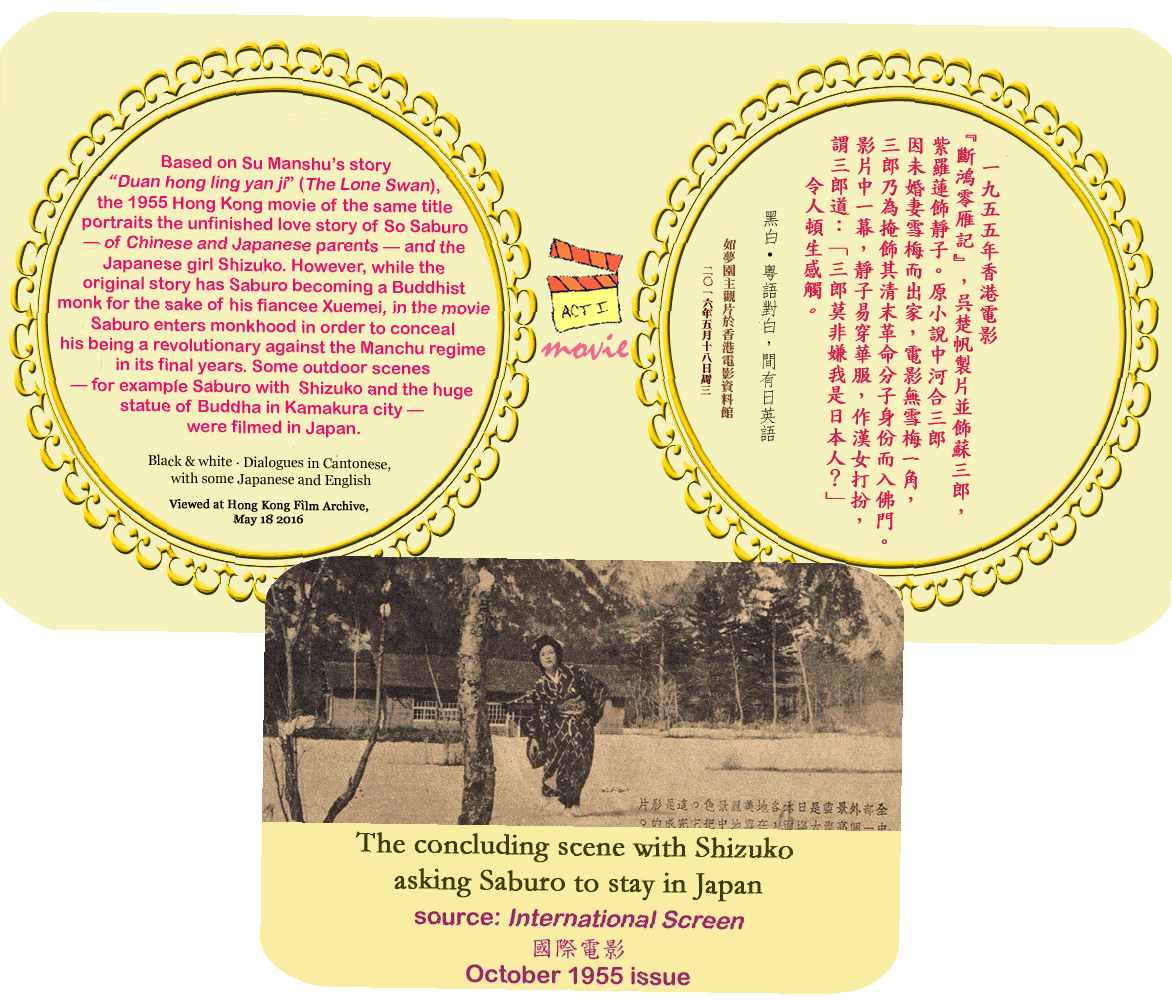

 (meaning snow plum), the second with the Japanese Shizuko
(meaning snow plum), the second with the Japanese Shizuko  . Both affairs were not consummated, and he remained a vagabond Buddhist monk.
. Both affairs were not consummated, and he remained a vagabond Buddhist monk.
 (yan) in the Chinese title Duan hong ling yan ji
is actually a "wild goose" in English. Probably intending to create a more literary mental association, George Kin Leung translated
"yan" into "swan". Swans are different from wild geese, though they belong to the same zoological family.
(yan) in the Chinese title Duan hong ling yan ji
is actually a "wild goose" in English. Probably intending to create a more literary mental association, George Kin Leung translated
"yan" into "swan". Swans are different from wild geese, though they belong to the same zoological family.
|
I had been ill for four days and nights before I could do without medicine. Mother and Aunt's household all showed rejoicings on their faces. On this third day of the third Moon [or perhaps 3 March of the Western calendar] it was fine and fresh. Approaching the window I rolled up the curtain, gazing out. Scenic hills brightening my eyes, flowers and birds pleasing my spirit; my heart was thus soothed. At this instant I recalled something: it was the clear fragrance that came through my nose when I woke up in the past few days. There, in a wide-belly vase on the zitan-wood [explained below] bedside table, always a new bunch of fresh flowers was changed. Flowers glistening with energy, their stamens still carrying dew droplets. This morning when I discovered a jade brooch left under the bedside table, I came to realise that it was hers. Naturally, the flowers were the beauty's gift. Excerpt from Chapter 11; translated by the Gardener |







(1)
(2)
(3)
(4)
|
| Manshu's poem |